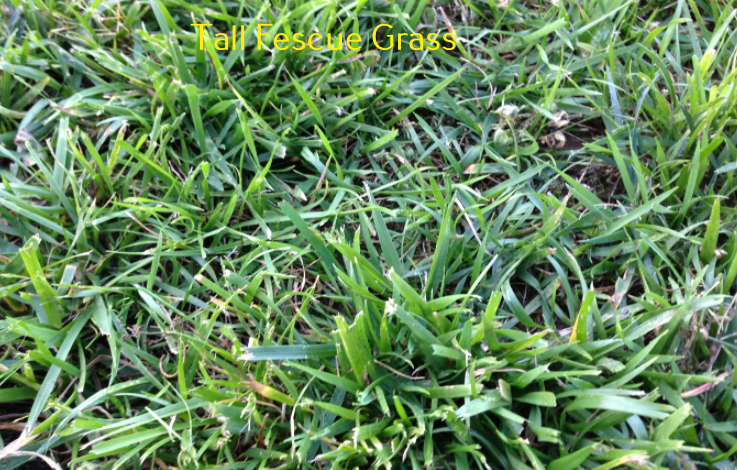Tall fescue grass is a cool-season turf that thrives in the spring and fall when temperatures are cooler. During hot and dryer summer months, fescue grass will go dormant if not properly watered. Under moderate conditions, this grass can remain green year-round. So, does tall fescue grass spread
The answer is yes, tall fescue grass spread through vertical shoots known as tillers. However, this happens at a slower rate as compared to other grasses that spread through underground rhizomes or above-ground stolons.
Does Tall fescue grass spread?
Unlike most grasses that are spread by underground rhizomes and above-ground stolons, tall fescue is a bunch-forming cool season grass that produces tillers – leaf blades growing from the shoot of the base plant. This limits its capacity to spread and fill bare or dead spots within a lawn.
Tall fescue has deep, widely set roots that give it great drought and heat tolerance. It adapts well in most hardy conditions, including partially shady areas. Tall Fescue is easy to maintain as low fertilizing and less mowing are needed.
Overseeding or mixing tall fescue grass with other turfs can help attain a uniform, dense lawn. The new grass or different variety will fill any bare spots that make tall fescue lawns appear scattered.
What does tall fescue grass look like?
In the fescue family, grasses, tall fescue, and fine fescue are popular. However, there are notable differences between fine and tall fescue grass influencing one’s decision on which to choose.
Tall fescue has wide blades that are dark green in color. Although shiny looking on the top surfaces, the blades are very coarse to the touch. The grass may appear isolated in mixed-grass lawns rather than forming a uniform, dense lawn. The mature turf-type tall feature can attain 4 to 12 inches in height.
This perennial grass loves full sun to partial shade. It tolerates most soil conditions, including clay. Like Bermuda grass, tall fescue is also good for high-traffic lawns and play areas. Combining the two can guarantee a green lush lawn throughout the year.

How to Make Tall Fescue Grass Spread Faster
Tall fescue is known to offer a high-performance, low-maintenance lawn. This dream can be achieved if you get quality seeds, prepare your soil adequately and plant the grass at the right time. Although adaptive to many soil types, well-draining soil will provide quick results.
1. Conduct soil testing
Soil testing before seeding is important before growing any type of grass. It reveals which important nutrients or elements are missing so they can be added before the grass is planted. Take a sample of your lawn soil to a nearby university extension or soil laboratory for testing.
A detailed recommendation from the extension office will guide you on what fertilizer to use or amend. Tall fescue withstands a wide pH range but does best when soil pH stays between 5.5 and 7.5.
If your soil pH is out of range, several amendments like lime or element sulfur may be recommended to restore the pH balance and nutrient availability.
2. Site and soil preparation
Adequate site preparation is usually important when planting a new lawn or overseeding. It mainly focuses on killing weeds or unwanted grass and leveling the land to avoid problems of flooding, erosion, or standing water in your yard. A professional landscape service may be helpful at this stage.
Chemical herbicides may be used to kill weeds or unwanted grasses completely, but you have to use them as directed by the manufacturers. You may have to wait for some time after spraying the weeds for them to die completely or for the residual effect of the herbicide in the soil to end.
Finally, you will have to rake the areas to remove all the debris and make the soil flat before spreading the seed. This will also be the best stage to add some fertilizer to your soil for faster grass growth.
3. Plant the seed
As a cool-season grass, cool weather supports its optimal growth. Therefore plant your tall fescues grass during late summer to early fall. Ideally, seed when soil temperatures near 60 to 65 degrees Fahrenheit. Take advantage of rains during this period to minimize watering needs.
Use a seed spreader for uniform application of the seed. Roll the area with a lawn roller to ensure good soil-to-seed contact. With the right soil moisture and temperature, tall fescue grass will germinate between 7 and 21 days.
If there are no rains, thorough watering is always important for grass seed germination. Watering twice a day will be greater but do not soak or flood your lawn. You do not need to water deeply if you are overseeding your existing lawn but simply keep the soil moist through light watering.
4. Care and maintenance
Once your grass has germinated, you can now minimize watering. Water deep and less often until the grass reaches the mowing stage. At a height of 4 to 5 inches, mow your lawn but remember that the one-third rule also applies – never mow more than one-third of the grass blade.
You will also want to protect your tall fescue grass from heavy foot traffic until the lawn is fully established. Keep children, pets, and anyone else away from the grass. This should be until you mow your lawn at least three times. Also, avoid weed and pest control products on the new grass.
Final Thoughts
Tall fescue grass is a great option if you live in the transition zone or the northern part of the United States. In this cool season, grass thrives in cold conditions and will remain green even in winter.
This drought and heat-tolerant turf does not require regular mowing and fertilization, and you can use it to have the most resilient lawn in your home, play areas, and golf courses.
References:
- University of Missouri: Understanding Those Fescues
- Richard L. Duble, Turfgrass Specialist, “Tall Fescue”: Texas Cooperative Extension
- The University of Tennessee Extension: Turfgrass Selection Fescues